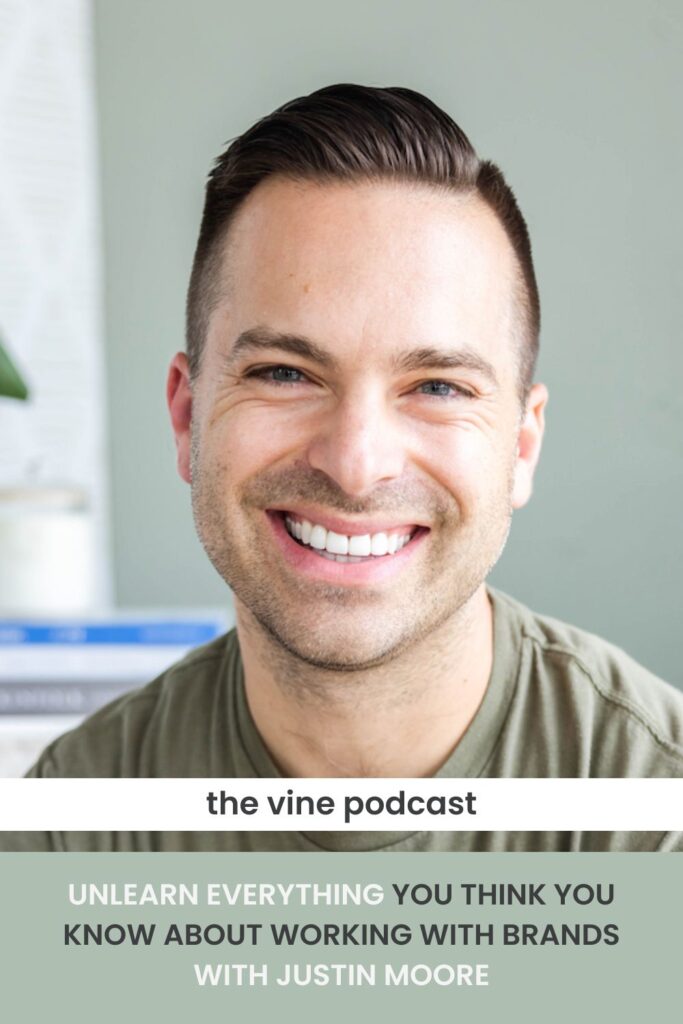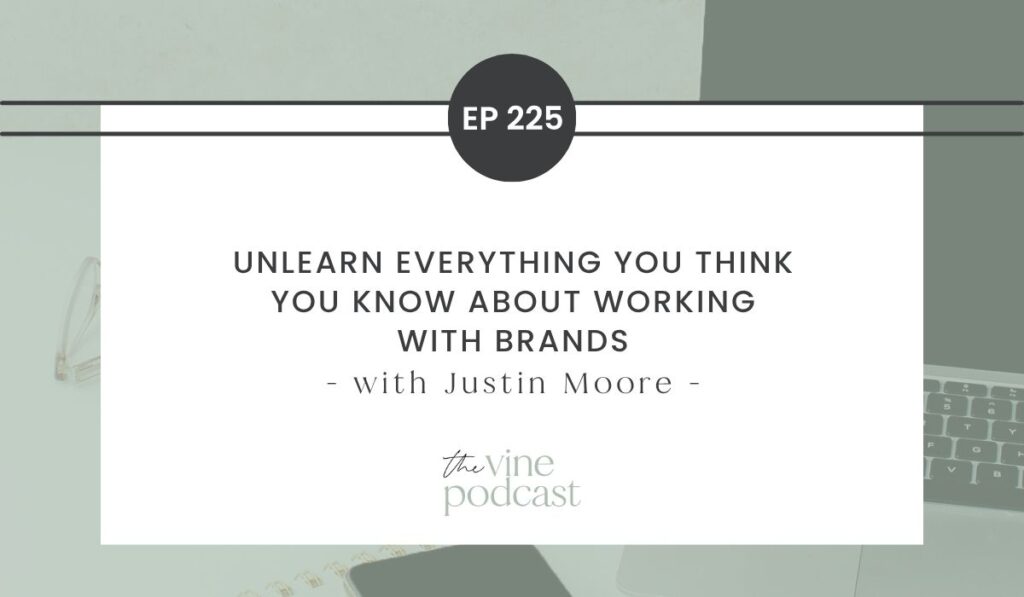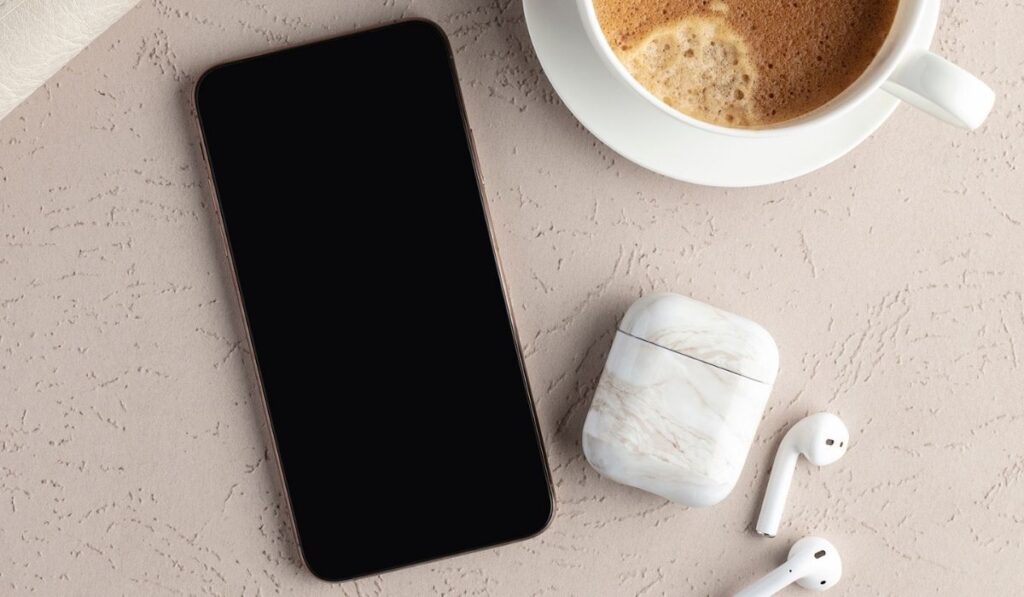If you’ve ever worked with a brand network and felt like you were just a number in a spreadsheet—paid pennies for content while the brand got all the value—you’re not alone. And if that experience made you swear off brand partnerships entirely? I get it.
But here’s what you need to know: brand partnerships don’t have to feel transactional, underpaid, or icky. In fact, when done right, they can become one of the most lucrative and enjoyable parts of your food blogging business.
Today, I’m sharing insights from my conversation with Justin Moore, a sponsorship strategist who has done over $5 million in brand deals and run an influencer marketing agency paying millions to creators. He’s literally seen both sides of the table, and he’s here to completely transform how you think about working with brands.
If you’ve been relying solely on ad revenue and watching it fluctuate with every Google update, or if you’re curious about adding brand partnerships to your income mix but don’t know where to start, this is for you.


Why Your Past Brand Partnership Experiences Might Have Sucked (And Why That Doesn’t Matter)
Let’s address the elephant in the room: many food bloggers have had terrible experiences with brand partnerships in the past.
Maybe you worked through a network that paid you $50 for a blog post while taking perpetual usage rights to your photos. Maybe you felt like you were just a cog in a machine, with zero negotiation power and stringent requirements that felt suffocating.
Here’s what was actually happening behind the scenes:
When a large brand comes to a network or agency with a $500,000 budget, they’re not asking for the top 10 food bloggers in a specific niche. They’re asking: “How many blog posts can you get us? How many impressions? How many social shares?”
It’s a volume play. And in that scenario, you absolutely are just a number.
But here’s the good news: That’s not the only way to do brand partnerships.
When you establish direct relationships with brands—especially smaller and medium-sized brands that have never done influencer marketing—everything changes. Yes, it requires more work upfront. You’ll need to educate them, craft compelling pitches, and get on Zoom calls. But those relationships turn into recurring monthly or quarterly partnerships where you’re not just a vendor—you’re a trusted consultant.
The Mindset Shift: You’re Not Just a Creator, You’re a Consultant
One of the biggest barriers food bloggers face when approaching brands is imposter syndrome.
“What do I know about marketing or advertising?”
Actually? A lot.
You know:
- What’s working on social media right now
- How to rank content in Google (and increasingly, in ChatGPT)
- What your audience is actually looking for and responding to
- How to create content that converts
Most brands? They don’t know any of this. Go look at any brand’s Instagram right now—they probably have 50,000 followers and get 10 likes per post. Their blog hasn’t been updated in two years. They’re not doing this day in and day out like you are.
When you approach brands as a consultant rather than just a content creator, everything shifts. You’re no longer someone they pay $1,000 to create one sponsored post. You’re someone they want on retainer to help advise their entire content strategy.
Should You Work With Brands That Have Never Done Influencer Marketing?
This might seem counterintuitive, but brands that have never worked with creators before can actually be your best opportunities.
Yes, the sales cycle will be longer. Yes, there will be more education required. But here’s why it’s worth it:
When you educate a brand on influencer marketing and prove your value, you become indispensable. Once they decide to devote marketing budget to working with creators, you’re already built into that budget. Working with you every month or quarter just becomes the norm.
The lifetime value of that relationship—the total amount you’ll make over years of working together—far exceeds what you’d make from a series of one-off deals with brands that already “get it.”

From One-Off Deal to Recurring Partnership: The Strategy
So how do you actually turn a single collaboration into an ongoing relationship?
Step 1: Absolutely Crush That First Deal
Brands rarely want to commit to long-term partnerships with creators they’ve never worked with. Why? Because frankly, a lot of creators are difficult to work with—unprofessional, uncommunicative, or just don’t deliver what they promised.
Your goal with that first deal is to blow their socks off:
- Be professional and timely
- Communicate clearly
- Be flexible when reasonable
- Deliver exceptional work
When you do this, the brand becomes so much more open to discussing a long-term engagement.
Step 2: Understand Their Goals (This Changes Everything)
Here’s the #1 most important question you need to ask on any discovery call with a brand:
**”What are your goals with this collaboration? What would make this a huge win for you?”
Most food bloggers never ask this. They jump straight to “How much will you pay me?” or “What are the deliverables?”
But when you understand what the brand is actually trying to accomplish, you can structure your proposal in a way that directly addresses those goals—and charge accordingly.
The ARC Framework
Justin introduced something called the ARC framework, which helps you understand what type of campaign the brand wants:
A = Awareness The brand wants to spread the word about their product. Maybe they’re launching in a new retailer or just want general buzz. These campaigns are about impressions, views, and engagement.
R = Repurposing The brand wants content they can use in other ways—ads, their website, email marketing. They might not even care if you post it on your own channels.
C = Conversion The brand wants to drive sales, coupon redemptions, or app sign-ups. There’s specific math behind what they can pay based on expected conversion rates.
Your pricing and proposal should change dramatically based on which category their goal falls into.
For awareness campaigns, you have way more negotiating leverage because the metrics are softer. For conversion campaigns, there’s hard math that limits what they can pay. For repurposing campaigns, you might not even need to post the content yourself—you’re just creating assets for them to use.
Step 3: Present Tiered Packages Aligned to Their Goals
Instead of giving the brand one option, create 3-4 packages that each address different aspects of their goals.
For example, if a brand says they want awareness AND conversions AND repurposable content:
- Package 1 (Awareness): Podcast sponsorship, blog post, Instagram stories
- Package 2 (Repurposing): Five 30-second videos they can run as ads (you don’t even post them)
- Package 3 (Conversion): Newsletter feature, Instagram story sequence with link stickers, recipe roundup
- Package 4 (Everything): All of the above
The brand quickly realizes that Package 4 is the only way to accomplish all their objectives. And just like that, you’ve turned what might have been a $2,000 one-off deal into a $10,000 partnership—or even better, a recurring monthly engagement.
Step 4: Follow Up With a Post-Campaign Report
This is where most creators drop the ball. They publish the content, invoice the brand, and never speak to them again.
Why? Because they’re terrified the brand will say it didn’t work well.
But here’s the truth: You’re either going to win or learn. You’re never going to lose.
If it went great, now you can pitch them on the next campaign. If it went just okay, now you have an opportunity to say, “Here’s what I think we could improve next time. What do you think?”
Include both quantitative and qualitative feedback in your report:
- The numbers (views, clicks, engagement)
- Audience feedback from comments, DMs, or emails
- Your recommendations for next time
Even if your audience had negative feedback about the product, share it! This is gold to the brand. Maybe they reformulated the product three months ago and your audience tried the old version. Boom—there’s your angle for the next integration.

The Pricing Question: What Should You Actually Charge?
Everyone wants a formula. Everyone wants a calculator. But here’s Justin’s advice: throw the formulas in the trash.
Pricing depends entirely on:
- What the brand is trying to accomplish (awareness vs. conversion vs. repurposing)
- What deliverables they want
- What usage rights they need
- Whether there’s an exclusivity clause
The Magic Question That Gets Brands to Tell You Their Budget
Instead of blurting out a number when a brand asks what you charge, try this instead:
“Thank you so much for all this information. I’d love to put together a custom proposal with 3-4 package options for how we could bring this partnership to life. Do you have a sense of what I should set those tiers at from a budget feasibility perspective?”
Then stop talking. Just wait.
75% of the time, they’ll tell you their range. And suddenly you know exactly where to price your packages.
The 25% of the time they still say “we don’t know, you tell us,” go with your “heck yeah” number—the price where if they pick that package, you’re genuinely excited to do the work.
Why Your Follower Count Matters Less Than You Think
Here’s a scenario where your audience size is completely irrelevant:
Imagine you approach your local restaurant chain and offer to create compelling social media ads they can run geo-targeted within a 25-mile radius of their locations. Does it matter how many followers you have? Not at all.
Or consider a veterinarian with a podcast about digital pathology. She gets hundreds or thousands of listens per episode—not tens of thousands. But her audience is lab techs, hospital decision-makers, and people at biopharmaceutical companies. Medical device companies with $50 million marketing budgets are fighting to sponsor her because she has access to an incredibly niche, valuable audience.
The more niche you are, the easier it is to charge premium prices.
Creative Deal Structures That Turn Into Long-Term Partnerships
Sometimes the path to a recurring deal requires creativity.
Real example: A creator was offered $5,000 for work he valued at $10,000. The brand only had $5,000 left in their quarterly budget. Instead of saying no, he proposed paying 50% from this quarter’s budget and 50% from next quarter’s budget.
The brand’s response? “You would do that for us? We didn’t know installments were an option. Can we do a 12-month deal at $5,000 per month?”
He turned a $5,000 one-off deal into $60,000 in recurring revenue—simply by being creative and understanding the brand’s constraints.
Why You Need to Follow Up (Even When It Feels Awkward)
Here’s a story that will haunt you:
A creator did a campaign with a brand. It went great. But he never heard back from them, so he assumed they weren’t interested in working together again. Months later, he ran into the brand’s influencer marketing manager at a conference.
The manager said: “It’s so great to see you! I really wish you had followed up because we should have done something again. I loved working with you—I’ve just been so busy.”
The moral: These brand contacts are human. They’re busy. They’re juggling multiple priorities. It’s not on them to reach out to you for another campaign. It’s on you.
Don’t make them work for it. Be the one to follow up and propose the next collaboration.
The Bottom Line
Brand partnerships don’t have to feel transactional or icky. When you approach them strategically—as a consultant rather than just a content creator—they can become one of the most enjoyable and lucrative parts of your business.
Here’s what to remember:
- Direct relationships with brands beat working through networks every time
- Smaller brands that have never done influencer marketing can be your best opportunities
- Understanding the brand’s goals (ARC framework) changes everything about how you price and propose
- One exceptional first deal can turn into years of recurring revenue
- Your audience size matters way less than the composition and engagement of that audience
- Always follow up with a post-campaign report and proposal for next steps
The food blogging industry is changing rapidly. Ad revenue fluctuates with every algorithm update. But direct brand partnerships? Those relationships can provide stable, recurring income that grows over time—if you’re willing to put in the work to establish them.
Call to Action
Ready to dive deeper into sponsorship strategy? Check out Justin Moore’s book “Sponsor Magnet” at sponsormagnet.com for scripts, frameworks, and step-by-step guidance on landing and keeping dream brand partnerships. And if you found this helpful, share it with another food blogger who’s ready to add brand partnerships to their income mix!
What’s been your experience with brand partnerships? Have you had the icky network experience, or have you found brands you love working with directly? Leave a comment below—I’d love to hear your story!

Justin Moore is a Sponsorship Coach, author, and the founder of Creator Wizard, a school & community that teaches you how to find & negotiate your dream brand partnerships so that you stop leaving thousands on the table. His latest book, “Sponsor Magnet,” offers a succinct distillation of his ideas and frameworks for securing successful brand collaborations.
Along with his wife April, he has been a full-time creator since 2014 and has personally made over $5M working with brands. He also ran an influencer marketing agency for 7 years that helped other creators earn millions more.
Justin brings a very unique perspective because not only has he been a creator in the trenches doing sponsorships for years but by running an agency, he has insider knowledge behind how big brands choose which influencers to partner with and why they pass on others. Justin’s mission is to enable creators big and small to land 1 million paid brand partnerships by 2032.

ready to take your food blog to the next level?
We work with food bloggers looking to stand out of the crowd through custom brand and website design.




Leave a Comment